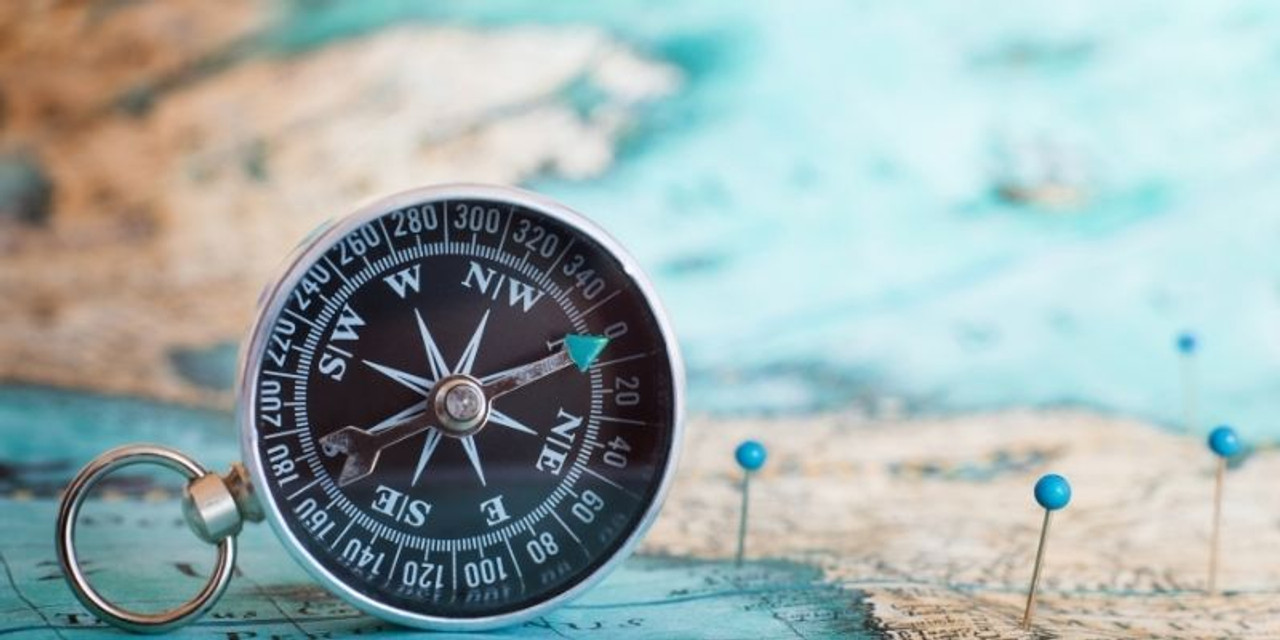How To Stay On The Map With or Without Snowshoes
Posted by Crescent Moon on Oct 21st 2020
It’s fall and there are just a few days left before the first big snowstorms arrive. It’s your last opportunity to get in a few hikes to see the fall colors before the change of season. Most snowshoers are also hikers and know their way around terrain. But for those of you who are new to the idea of putting on a backpack and either spending the day on a well-marked trail, or perhaps bush-whacking through the forest you will benefit by taking the time to collect and follow some basic information on how to stay on the map. Literally.
Here are some tips on what to bring and how to prepare yourself, which applies to trials with or without your Crescent Moon Foam Snowshoes.
Carry a Map Of The Trails You're Snowshoeing
You can find maps online under a variety of governmental agencies who publish maps such as the USFS (forest service), USGS (topographical), as well as stores which specialize in maps. If you’re going into unfamiliar territory, it’s always best to study the map before you get there to familiarize yourself with obvious landmarks, directions, and essentially, “orient” yourself to the terrain. Even if you’ve been on the trail you’ve chosen before, the terrain looks very different from one season to the next and with snow in particular, it’s possible to become disoriented.
A Compass Is Necessary For Your Snowshoe Pack
In addition to a good topographic trail map, pick up a compass and again, before you hit the trail, learn how to use it. Practice finding true north in your backyard, or the park and then choose a visible and obvious landmark, note their direction on the compass and begin the process of finding yourself on the map.
I also recommend you learn your ‘pace’, in other words, how many steps do you take to cover 100 feet. Most people are between 15 and 20 (by the way, a pace in my definition is 2 normal steps on flat ground); divide the total number of steps you take in 100 feet by 2 and you’ll be able to calculate your own pace (e.g. my pace is 6 feet – which also happens to be my height, it takes me approximately 16 ½ paces to go 100 feet. This is another one of those things your can do in your backyard or at the park. Your pace will change depending on weather you’re going uphill or down, more for up and less for down, but it will be an average you can count on and use when you need to know how far to go. You should also “time” yourself, again, on flat ground to know how long it takes you to walk a mile, for example, at a “normal” and sustainable rate.
The more you know about yourself and your surroundings before you go out on an extended hike, the safer and more comfortable you will be. And that equates to a better experience hiking or snowshoeing. All of this information will be of value to you when you discover you need to go ½ mile in a northwesterly direction to find your campsite before it turns dark in the next hour. The more you know, the better you’ll be.
Check out our other blog posts on choosing the how to snowshoe for beginners, snowshoe sizing and snowshoe safety. We’ll be talking about getting prepared for the upcoming snowshoe season. We’ll talk about snowshoe accessories, clothing, picking the right trail, and much more. Have questions about our snowshoes, we are here to help. Don’t forget to follow us on Facebook and Twitter to see what’s new at Crescent Moon.
